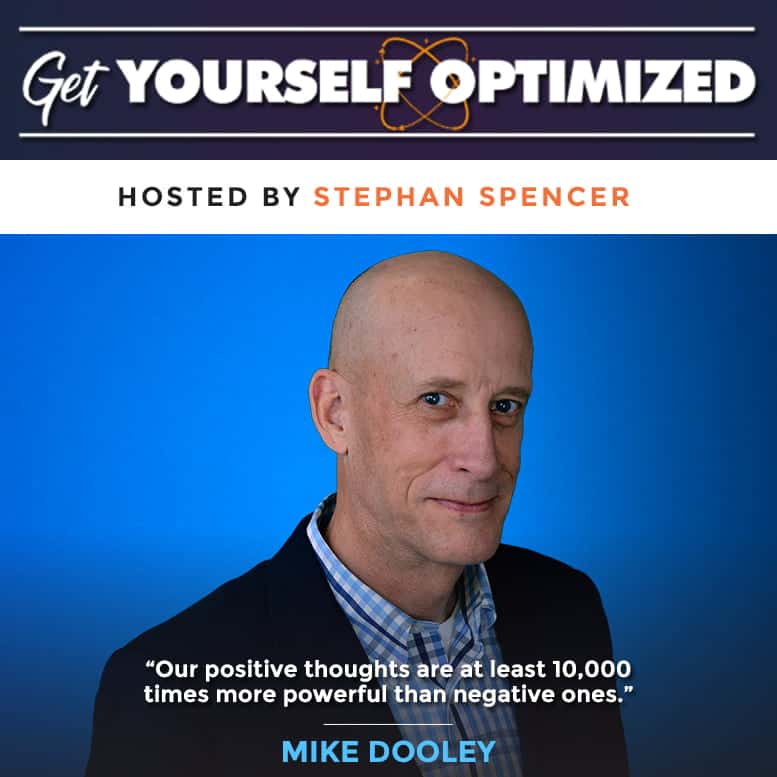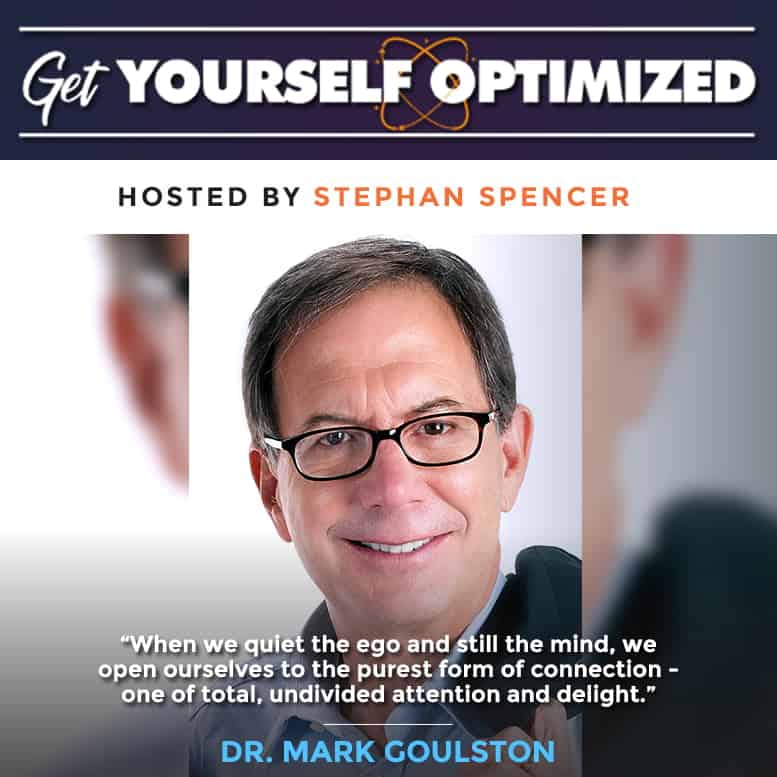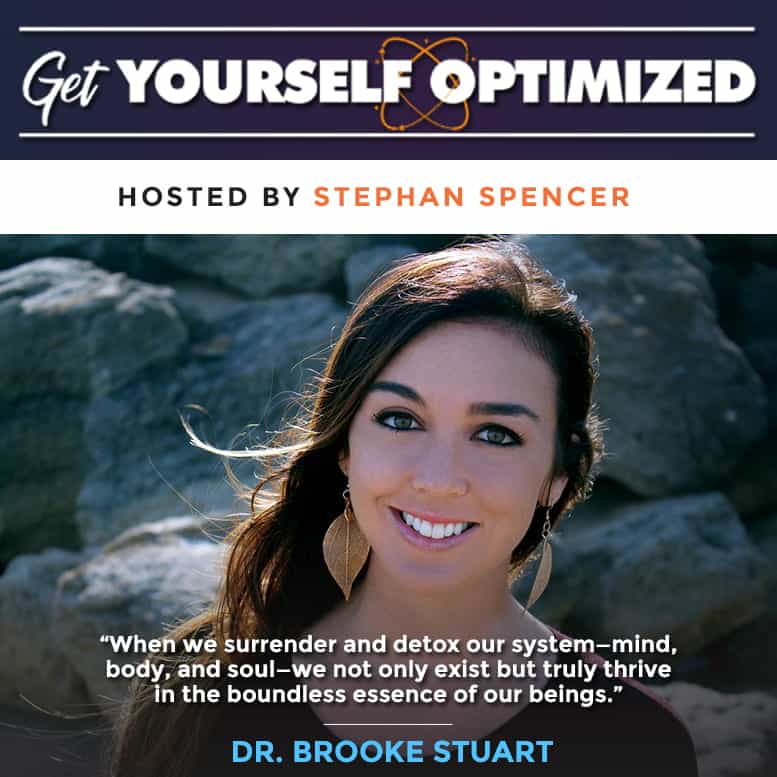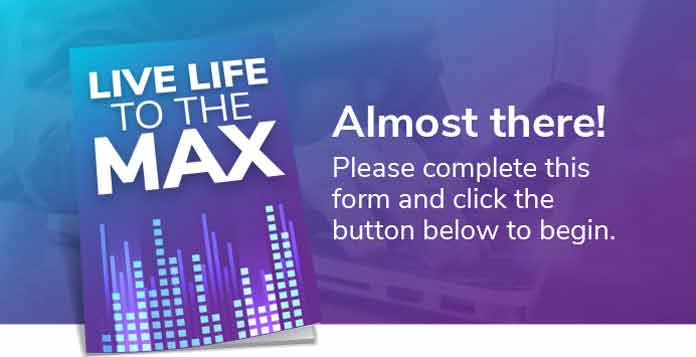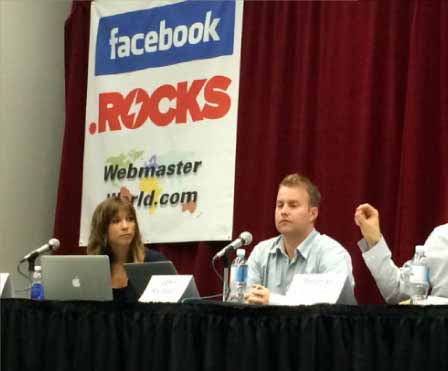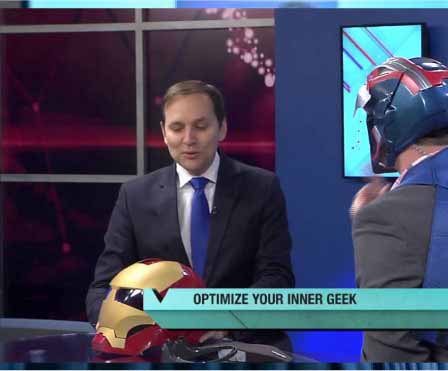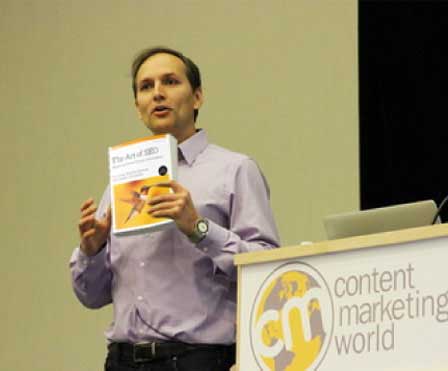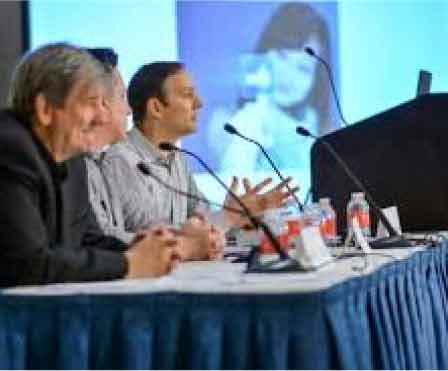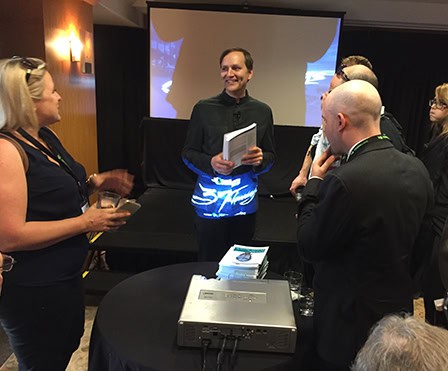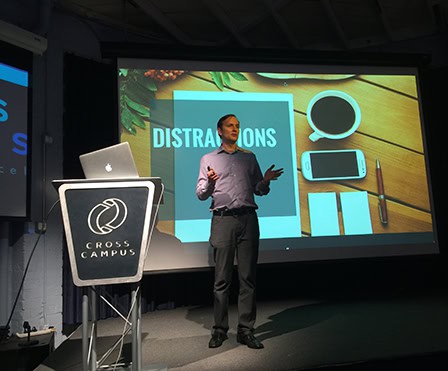In this Episode
- [01:52]The E-Myth is the entrepreneurial myth, Michael explains. He goes into more depth, describing the difference between entrepreneurs and “technicians suffering from an entrepreneurial seizure.” He and Stephan then discuss the concept of a “company of one.”
- [04:10]Michael talks about companies not surviving the first ten years, and offers his definition of survival. He also talks about the importance of having an exit strategy.
- [09:10]Why build a new company instead of fixing the current one? Michael’s response is that Stephan’s hypothetical scenario isn’t one that’s of interest to him. He and Stephan then talk about a more realistic scenario: a businessman with a few employees.
- [13:39]The “entrepreneur within” is four distinct personalities, Michael says. He explains what they are: the dreamer, the thinker, the storyteller, and the leader. These correspond to the dream, the vision, the purpose, and the mission. He also describes his Dreaming Room, and gives examples of companies that he’s helped achieve success (including Infusionsoft and 1-800-Got-Junk).
- [20:15]Michael explains why his new book Beyond the E-Myth is “beyond” the E-Myth. People see growth, opportunities, and problems as complex, he explains, and this book makes them simple by giving a list of steps.
- [21:23]Michael’s first four steps correspond to the personalities and roles of the four aspects of the entrepreneur within. Together, they form the foundation or platform on which you can grow a company strong enough to sell.
- [22:15]Many businesses are confused by the differences between these categories. Michael gives examples of his answers to help clarify the categories for listeners. He and Stephan then talk about the example of McDonald’s to illustrate the difference between creating a business versus creating a job for yourself.
- [26:28]Michael talks about who his consumer is: the independent small business owner.
- [27:41]“You’re not trying to fix what’s broken, you’re trying to create what’s not,” Michael memorably tells us. He goes on to explain more about the importance of creating a new business instead of fixing a broken one, or choosing “NewCo” over “OldCo.”
- [29:32]Stephan talks about Carl Jung’s separate office for his dreaming work, and mentions his previous interview with Cal Newport. He and Michael discuss the importance of having a separate space for your deep work, or big-picture thinking.
- [30:29]We’ve now reached the mission, which is to “invent the turnkey system that will enable you to realize and manifest your dream, your vision, and your purpose.”
- [32:52]In discussing the importance of NewCo over OldCo, Michael talks about Lockheed Martin’s Skunk Works, which he holds up as an example of NewCo.
- [35:02]Michael explains the difference between a mission statement and a vision statement.
- [37:26]Some people are too rigid to easily accept that they aren’t irreplaceable. This makes it harder for them to go through these steps, Michael tells us. He also talks about what makes a turnkey system or business “turnkey.”
- [41:52]Michael gives his definition of a legacy. It isn’t about money, he explains, but rather the creations you’ve left behind.
Transcript
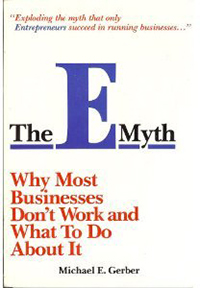
Hello and welcome to Get Yourself Optimized. I’m your host Stephan Spencer. I’m so excited about today’s episode. I have Michael E. Gerber joining us. He’s the mega-bestselling author of 28 E-Myth books include The E-Myth, The E-Myth Revisited, and now his newest book, Beyond The E-Myth. The E-Myth was voted the number one business book by Inc. 500 CEOs. The Wall Street Journal named The E-Myth the bestselling business book of all time. It sold over 5 million copies. Michael was the originator of the small business coaching industry way back in 1975. Inc. Magazine calls Michael the World’s Number One Small Business Guru and I couldn’t agree with them more. The E-Myth has been applied in 145 countries, it’s been translated into 29 languages, it’s taught in 118 universities. Michael’s work has certainly impacted hundreds of thousands of companies, probably a great many more. He certainly has changed the world already and he’s got something really exciting and new in store for us with his newest book, Beyond The E-Myth. Welcome, Michael, it’s so great to have you.
I’m delighted, Stephan.
Let’s start with exactly what is an e-myth or what is the e-myth?
The e-myth is the entrepreneurial myth. It essentially describes the condition of 99.9% of all people who go into business for themselves, rather than being entrepreneurs. They’re what I come to call technicians suffering from an entrepreneurial seizure, in short they created a job for themselves.
They’re self-employed instead of being a business owner.
They may not think of themselves that way, Stephan. Meaning, they may think they’ve got a business but in reality they don’t.
What did they have then?
Well, they got a job. Effectively in any and every case as we define a company of one which is the core reality of most small companies. When we define a company of one, we mean that the company wouldn’t work if the owner weren’t there. The company depends upon the owner for its livelihood.
Even though it’s a medium, or let’s say it’s larger than the typical small business, maybe you’ve got dozens of employees, you’re in multiple offices. I had an agency where we were in three different countries. We had at our peak 65 employees and if I were to just leave the business, it wouldn’t survive, then I’ve got a company of one.
You got it. Understand too what you just described in three different countries, 65 people, etcetera, that is a very rare experience, a very rare reality. If you look at the reality of small businesses, the vast majority of companies have fewer than 20 employees and the vast majority of those have fewer than 10. If you look at a small business which is the “small business”, the vast majority of them are less than 10 people and the vast majority of those are less than 5.
Okay, and then a lot of these companies go out of business within just a few short years. I think the stat that I heard is 95% of businesses don’t survive the first 10 years.
Absolutely. Understand what survival means. By surviving, it doesn’t necessarily mean that they shut their doors. What it does mean is that there is no end to this game other than failure. There’s no exit strategy.

That’s a really important point. An exit strategy is what differentiates a business from being self-employed, right? If you go into it thinking, “I’m just going to have a lifestyle business,” they’re not actually creating a business.
No, they’re not creating a business at all, they’re creating a job to suit your particular mood. You’re focused on income, you’re not focused on equity. You’re focused on work, you’re not focused on an exit strategy. If you’re not focused on an exit strategy, the way you approach the business of business is completely different from if you are.
Let’s define an exit strategy because kind of the default exit strategy for most businesses is the owner is going to eventually die and then who knows what will happen to the business? Maybe somebody in the family will take it over, maybe it will just dissolve, maybe it’ll just, who knows? Fail to plan and you plan to fail.
We absolutely do know, that’s the point of it. Statistically, we absolutely do know. In short, it stops being. In short, whatever the decision is, it stops being. You get older, isn’t that true Stephan, we get older? Or maybe no.
You don’t look it, you look great.
We get older and the point is as we get older, the energy that we had when we were younger fails us. Now what used to be “fun, a lifestyle, and so forth and so on” becomes exactly the opposite of that. It becomes a disaster. I’m not making that up to create a story. The story is what’s true. The question is then what to do about it?
Right, what do you do about it?
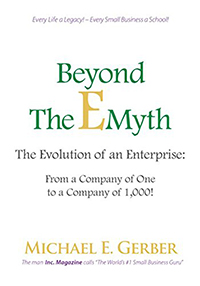
What you do about it is what I described in Beyond The E-Myth, The Evolution Of An Enterprise From A Company Of 1 To A Company Of 1,000. You started anew, do you understand that all of this years that I’ve been doing this work Stephan, now 40 years doing the work that I’m describing here. Working with small companies with over 100,000 clients since we started our company 1977, what we have learned is the vast majority of them aren’t going to make it. The vast majority of them aren’t going to make it not because there is no possibility for making it, it’s because they don’t know how to make it. We have to reframe the game if you will. By reframing the game, what I mean is we provide an owner with a new place to be. I call it NEW-CO rather that OLD-CO. What I’m saying to every single person listening to us right now is that the job isn’t to fix the business you got, the job is to create the company you want. By you want, I’m looking at the exit strategy. I’m saying there’s only one reason to start a company and that’s eventually to sell it. From the very first day, we’re getting it ready for sale. Now that’s true and that’s true, that’s possible for everyone, then we must then adopt a process that will enable us to do that. That’s what I include in Beyond The E-Myth, The Evolution Of An Enterprise From A Company Of 1 To A Company Of 1,000. The distinct and discrete steps one must take from the very beginning to the very end and the beauty of that is everybody on the planet can indeed take those steps.
Before we go into these steps, I’m sure somebody who’s listening is saying, “Well, okay, I’m not going to start up a new company, I’ve got my existing company. I’m just going to fix it.” Why would they need to do this differently? Why would they need to start a new company and build it from the ground up with that intention instead of just fixing the company they have, perhaps they have multiple offices, they have all these staff. They can’t just abandon what they’re doing, why can’t they just fix what they’ve got?
Stay with me for a moment, Stephan. What you’re setting up is a reality that is not of interest to me. Understand I’m not interested in he’s got offices all over the place, he’s got 112 people, etcetera. I’m not interested in that at all. The reason that I’m not interested in that is because that represents a mere fraction of business reality.
Okay. We went over this, the stats show that the vast, vast majority of small business are tiny, fewer than five employees. Let’s take that as a hypothetical.
You got it.
Let’s say there’s only three staff and the business owner, but he or she has been around for years operating this business. They’ve got customers, they’ve got a brand that’s recognized for that customer base. You’re proposing that they kind of set that aside and start a new company. I think, maybe I’m misreading it.
Yeah, you’re sort of misreading it. Let me describe it as I would describe it. You’re speaking about a guy, let’s say he’s got three people in but he’s got customers, he’s got a brand. He doesn’t have a brand, he’s got a working job with some help. He’s got a working job with some help and he sells whatever he is selling. He doesn’t have enough customers, he doesn’t have anytime for himself. He’s not really making a lot of money if he’s making any money at all. His people aren’t really, really excited about being there because there’s no place they’re going. Do you understand the reality of small business which is the market that we are focused on because our dream is to transform the state of small business worldwide to truly turn it upside down. We start with that, gentleman you just described with three people, he’s got customers, he’s been there forever, whatever forever means. But he’s not happy, Stephan, you understand? He’s not happy and so he keeps on looking for answers to his problem and he gets this and he buys that and he installs the other and none of it makes any difference. None of it makes any difference because he is truly not preparing himself to grow beyond three people or maybe five, and the reason he’s not is because his entire experience over the years is that growth is bad, growth creates chaos.
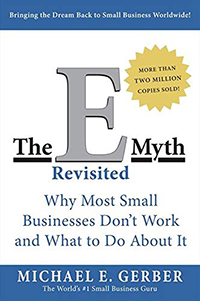
I’m sure that creates pain because that person doesn’t know to operate a much bigger business and that means that they’re going to have to hire some CEO or whatever and they loose control over the situation and that’s the pointy haired boss, doesn’t want to relinquish control.
Let’s not think about hiring a CEO because also that’s not consistent with the reality that we’re dealing with. I’m talking about a guy who’s not making it. I’m talking about a guy who is working his butt off. I’m talking about a guy who’s got a belief system that’s created the situation he is in. I want to change his belief system. The way that I’m going to change his belief system is by telling him a story first of all. The story is about the reality of the marketplace. The reality of the marketplace suggests that there’s something significantly grander in store for him if he’s willing to stop for a moment, just open his mind, and walk through a process with me. I call that process the dreaming room, and the dreaming room really has one purpose and one purpose only, it’s to seed a growing enterprise. In order to seed a growing enterprise, I got to awaken the entrepreneur within because the guy’s not an entrepreneur. That’s the whole idea of the E-Myth, he’s a technician suffering from an entrepreneurial seizure, went out on his own and created a job for himself doing it, doing it, doing it, busy, busy, busy, busy. We got to change that. How do we change that? When I say we awaken the entrepreneur within, the entrepreneur is really four very distinct personalities. Their personalities you possess Stephan, the personalities I possess, the personalities that everybody possesses but unfortunately for most, insufficiently, nor do they have a relationship with those personalities. The first is the dreamer, the second is the thinker, the third is the story teller and the fourth is the leader. An entrepreneur is a dreamer, a thinker, a storyteller, and a leader. The dreamer has a dream, the thinker has a vision, the storyteller has a purpose, and the leader has a mission. Stay with me here.
Okay.
Martin Luther King said “I have dream.” I don’t know how long ago it was that you listened to Martin Luther King say, “I have dream.” If you would have talked to 99.9% of all small business owners, they don’t have one. Listen to Martin Luther King, listen to a small business owner, you’ll see what’s missing in this picture. There is no dream. The dream, Stephan, is what I call the great result. We’re starting the company anew not to start a new business, but to start a new process. The process begins with a dream, it continues with a vision, it continues further with the purpose, and it continues further with a mission. I’m going to help every guy who owns his own little company to discover the entrepreneur within, to discover his dream, his vision, his purpose, and his mission. In fact in the process of doing that, he or she is going to come face to face with the reality they’ve never faced before. You might say, “Holy cow, reality.” When I had one of those meetings with the founders of Infusionsoft, Clate Mask and the boys, they came to The Dreaming Room. When they came to The Dreaming Room which I led, it was a three day event, this was about six and a half years ago. One of them came after me and said, “What is this dreaming room stuff? We just want to fix our business.” I said, “Guys, we got three days together, when we’re done come up to me and tell me what you found out.” Well, you gotta understand when I first met Infusionsoft, they were a group of guys who were working, working, working and doing it, doing it and doing it. They didn’t have a dream, they didn’t have a vision, they didn’t have a purpose, they didn’t have a mission. If I were to say that to them, they wouldn’t have agreed with me. Yeah, we do have dream, yeah we do have a vision, yeah we do have a purpose, yeah we do have a mission. Yeah let me show you, but it wasn’t showing up in their company.
Right.
What happened in that dreaming room with Clate Mask and Scott Martineau and their executive team, when they got done, they couldn’t go to sleep at night. They suddenly discovered Infusionsoft in a way they had never thought of it before. I got to tell you that Clate Mask, if you were to ask him today, he would say that The Dreaming Room, Michael Gerber, was one of the three most significant things that have happened in their company. Their company went from a handful of people, very, very small, today, beyond $100 million in revenue with over 35,000 clients.
Yep, and I’m one of them.
It goes for thousands of people.
Every single person I’ve ever met is small but the beauty of it is they don’t have to be.
Amazing.
From A Company Of One To A Company Of 1,000. Have you heard of the company Got Junk, 1-800-Got-Junk? The founder of that company simply read the book The E-Myth Revisited. He was driving at a truck picking up junk when he was going to college. A guy came to him and said, “Have you read this book?” He gave him my book, The E-Myth Revisited. He read the book, that’s what created 1-800-Got Junk. He tells the story all the time. Before the book, I was doing it, doing it, doing it. After the book, I created an enterprise close to 200 million in revenue and then a national franchise. Understand that when we talk about small, every single person I’ve ever met is small but the beauty of it is they don’t have to be.
So they need a process.
They need a new way of seeing the world, do you understand? When I saw your big book, remember when you had your big book?
Yes.
Your big book about SEO enables a business owner to see his business in a completely different way.
Yeah, that’s true.
Absolutely different way. If he doesn’t change his mind, he will never change what he does. If he doesn’t change his mind, he will never change what he does or how he does it. If you stay with the very same company with your intelligence and demonstrate, a method and a mantra can effectively transform any small company. That’s what we do. That’s what Beyond The E-Myth does, it’s less than 113 pages. I decided to go on and completely transform the state of small business worldwide. I wanted to demonstrate to anybody who owns a small company, the absolutely clear, definable steps they must take to grow from where they are to where they never imagined they could ever be. That’s what I do in the book and that’s why it’s so important for anybody who owns a small company whether they got 50 people or 2, doesn’t really make any difference.
Why is it Beyond The E-myth? The E-Myth Revisited, all the different other e-myth book where you went to different vertical markets, it was fantastically received. You sold millions of books and you’ve changed so many businesses, Got Junk is one example of which. Why is this Beyond The E-Myth? Are you kind of starting over with a new process or is it the same process and just expanded or what makes it beyond?
It’s beyond because it’s taking all of the complexity out of before and making it simple. In short, the greatest single problem every single one of these folks we are talking to right now has, is make everything complex. Complex, complex, complex. The more technology, the more complex. The more desire, the more complex. They see growth as complex. They see the future as complex. They see the opportunities and the problems as complex. Beyond The E-Myth in fact takes them beyond everything I’ve written before and brings it down to the core essential ingredients.
Okay.
The greatest single problem every people have is to make everything complex.
To make it simple stupid, it’s absolutely the most brilliant thing anybody can do. That’s why I decided to write this book, to make it simple stupid. Step one, step two, step three, step four, five, six, seven, eight, that’s the job.
Right, and step one is the dreaming process.
Step one is the dream, step two is the vision, step three is the purpose, step four is the mission. Once we’ve created that platform, that’s what the boys at Infusionsoft saw. It’s a platform upon which to grow their company. It’s the foundation for growing any company. It’s absolutely necessary if you’re going to grow anything and especially if you’re ever going to sell it.
Which is kind of the whole point. I’ve seen a lot of vision statements and mission statements and they seem to be used interchangeably in companies. Some have both, some have one or the other. I find it very confusing, I think that most businesses don’t get the difference, maybe you could clarify that.
I can absolutely clarify it. That’s why I’m here, Stephan. Let me describe or define a dream, a vision, a purpose and a mission.
Okay.
I’ll define it by sharing what my dream, my vision, my purpose and my mission has been since we founded the company in 1977. That’s how long this has been alive and well.
Amazing.
Our dream is the great result. Define a dream as a great result. “I have a dream,” Martin Luther King said. Martin Luther King defined a great result, didn’t define how, didn’t define when, he didn’t define anything other than the great result. The great result is key. Everything depends on it. My great result was, and is, to transform the state of small business worldwide. From what to what? From confusion to order. To transform the state of small business worldwide is our dream. Our vision is the form our company needed to take in order to do that. Our vision was to invent the McDonalds of small business consulting, what in the hell does that mean? All you gotta think about is McDonalds and you’ll immediately know what it means. Turnkey, in short, we had to create a turnkey operating system that we could replicate faithfully thousands of times. In order to be able to realize our dream, to transform the state of small business worldwide, we had to invent the McDonalds of small business consulting. Scalable, scalable, scalable, scalable, scalable. Turnkey, turnkey, turnkey, low cost, low cost, low cost, consistent, consistent, consistent.
Define a dream as a great result. Click To TweetThe big mistake, or one of the big mistakes that a lot of business owners make or technicians is they start their business thinking that they are entrepreneurs. They create this really great burger joint and serve up the best burgers, and it’s all about the product and they never think about scale so it never grows. Two or three locations maybe, but probably only the one. And then when the person dies or gets old and tired or just bored, then that business dies. That one location dies, whereas McDonald started with a dream that was scalable and had nothing to do with making the best burger but making a huge enterprise.
You have to be able to discriminate between what you just said, a best burger and a McDonalds burgers. You got to understand, Ray Kroc, his was the best burger.
Okay.
You got to understand, it wasn’t about best burger or worst burger. It was about best system, worst system. The difference between Ray Kroc starting McDonalds and Murray starting a hamburger restaurant was that Ray Kroc never worked in McDonalds. Ray Kroc never made a hamburger, never made a french fry, never made a milkshake. Ray Kroc opened McDonald’s corporate down the street and his restaurant some place else. Ray Kroc didn’t have an office in the restaurant, everybody else does. Ray Kroc went to work on McDonalds, not in it, and get it ready for scale.
That’s what you hear all the time, work on your business not in it.
You got it. So yo get it, so the dream, the vision. That’s the difference between the vision and the dream. The dream is the great result you’re going to produce, the vision is the form the business is going to take to produce it. The purpose is your consumer. Who’s my consumer? My consumer is an independent, small business owner. We’ve been talking about that, who’s my consumer? It’s the smallest of the small. It’s a company point, you got it. That’s my consumer. My consumer is and emerging enterprise, my consumer is a small office enterprise. It could be because what I’m talking about works everywhere, for any kind of company, but in reality my focus is on the smallest of the small.
So it finally clicked for me, I get it now what you were saying earlier about NEW-CO, versus OLD-CO. If you had the burger joint, if you were Murray and if you had the office inside of the burger joint and you’re trying to do your paperwork and everything and you’re attempting to dream everything inside the business, inside the location, you wouldn’t be able to dream effectively, you wouldn’t be able to see the bigger picture. If you were like Ray Kroc, setting up a separate corporate office and working on the big dream there, you’re not being pulled in, sucked into the daily minutiae of that operating business.
We’re not here to fix what we’ve got, we’re here to create what we don’t. – Walt Disney
You go it, you’re not trying to fix what’s broken, you’re trying to create what’s not. We have learned over these years, you said why Beyond The E-Myth? Because over these years, Stephan, we’ve been fixing broken businesses and that’s been our business. We’ve been fixing broken businesses, we’ve been doing exactly the opposite of what I’ve just said. What we are doing now is starting new ones. That corporate office of Ray Kroc’s, I’m taking my client’s mind, my reader’s mind and I’m taking this OLD-CO mind and putting it over here, I’m moving my left hand over here, his NEW-CO mind over here, and I’m putting my right hand over here. I’m asking him to split his attention, not to invest all of his time and energy and money fixing what isn’t working, but to invest just a little bit of his time and intelligence on new-co, the blank piece of paper in beginner’s mind. To begin to ask the question, so what is my dream? What is my vision? What is my purpose? What is my mission? It’s completely new. It’s like Walt Disney at Disney imagineering. Walt Disney, Disney imagineering says, “Don’t tell me what you know, because what we’re to do here has nothing to do with what we’ve done or what we know, scrap it. We’re going to create something we’ve never created before. That’s what I’m saying to that small business owner just like Walt says to his engineering guys, imagineering guys. He said, “We’re not here to fix what we’ve got, we’re here to create what we don’t.” That’s what I’m saying to you.
That makes sense. Karl Young, he had a separate office for his dreaming and his big picture work where he got into like a state of flow. This is written about in Deep Work and Cal Newport who wrote that book was actually one of my previous interviews on Get Yourself Optimized. Great interview, listeners, by the way. Definitely check that one out. It really struck me, you create a separate environment and you don’t intermingle the two because you’re going to break your flow and not be able to stay in a state of deep work.
Absolutely, and identically the same. Young didn’t do his dreaming work where he did his other work.
He had a completely separate space in the country where he did his research and his big picture thinking.
You got it.
Awesome, so he got into purpose, what’s next?
Your purpose, now we’re at your mission. The dreamer, the thinker, the storyteller, the leader. The dreamer has a dream, the thinker has a vision, the storyteller has a purpose, and the leader has a mission. The mission is very clear, to invent the turnkey system that will enable you to realize and manifest your dream, your vision, and your purpose. We at E-Myth, way back then at the beginning when it was called The Michel Thomas Corporation, our mission was to invent the turnkey business development system. The purpose of which was that we would have the internal artificial intelligence that we could teach to relative novices who could apply it at will to any kind of the small business on the face of this earth. We built that, the seven centers of management attention, a whole array of processes and systems all integrated into one methodology. Be it complex was astonishingly effective. It was the core infrastructure, if you will, of our company. We didn’t create that by doing it, we created that by creating that while we were doing what we knew how to do. And then we would bring NEW-CO over once it was working or you might say OLD-CO over once NEW-CO was working and marry the two. Gradually, OLD-CO disappeared, NEW-CO took its place and I’m saying that that’s what everybody can do, must do, and the beauty of it is it’s simpler.
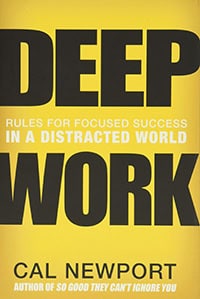
NEW-CO is an actual separate company, a C-Corp or S-Corp or whatever, it’s a completely distinct entity.
Yes, it’s very, very important that you make it distinctly separate.
Got it.
Otherwise, you keep on confusing the two.
Yeah, just like having one location where you’re trying to do your big picture thinking and flipping the birds.
Yep, you’re familiar with the skunk works?
Yeah, tell me more about that.
NEW-CO is skunk works.
Okay.
Go to North Ridge, NEW-CO is a skunk works. Look at all the skunk works projects that company is working on. Go online, click on to them. About 70 different business projects they’re working on, none of which relate to anything else they’re doing, every single one of them is an invention in process, creating a future that nobody could ever imagine until they began to do it. I’m saying that everyone gets to do that, I’m saying that everyone has the ability to do that.
You don’t have to be some mega million dollar business.
No, it ain’t rocket science.
I’ll be sure to include a link to that page with all the innovation projects of what was is it? North ridge you said?
North Ridge.
I’ve been to that page, it’s pretty impressive what they do and then they’re sharing with the world all those kinds of innovative projects. They’re not just being all super secretive about it.
That’s perfect, just imagine that you’re doing the very same thing one time.
Yeah.
You take one of those projects, that project is NEW-CO, that’s your NEW-CO, that’s your new version of what in fact you started, whatever you started it, and in many cases it wouldn’t even look like it.
Yup.
You’ll definitely come face to face with the fact that your dream, as you begin to discover it, as it begins to appear to you, is significantly different than anything you thought you would be doing but it’s so right and you say to yourself, “How come I never thought of that before?”
Let’s go back to my previous question, the difference between a vision statement and a mission statement. If the mission is to invent a turnkey system and the vision is to form a company that you need to create in order to realize your dream. What’s the difference between these two statements?
You might say that the vision statement is the big how you’re going to realize your dream. I’m going to create a McDonald’s of small business consulting. Doesn’t get into how am I going to do that, how am I going to do that, how am I going to do that? That’s irrelevant. Until I know that I’m going to do that, I don’t have a model for doing that.
Yeah.
McDonalds suddenly became the model for my new company. Now understand, it’s not going to be the same as McDonalds, we don’t even have to talk about how, how, how. The great how is I’m going to create a turnkey methodology that’s scalable, infinitely scalable as compared to opening up a restaurant and having one and then boy, people really like this, maybe we can create two. Do you understand? Instead of it happening, we’re doing it by intention.
I love that word, I love intention.
Mission statement has a lot of how in it whereas the vision statement has not.
The mission is now to put the pieces together. If I’m going to create the McDonald’s up, then the question becomes how am I going to do it? The mission ultimately is to invent the system that will enable us to realize our dream, transform the state of small business worldwide, create the McDonalds of small business consulting, turnkey, turnkey, turnkey, scalable, scalable, scalable, replicable, replicable, replicable in the hands of minimum wage kids. I’m going to focus my attention on only one very important market and that is the independently owned small business. A company of one where typically it completely depends upon the owner’s ability, determination, willingness to work, etc., and so forth. I’m going to invent a system that enables that individual to become an entrepreneur.
Mission statement has a lot of how in it whereas the vision statement has not.
You got it.
People who believe that they’re not irreplaceable in the business and they’re just kind of rigid in their thinking, can they go through this process and actually get the result or are they just too rigid?
Some are too rigid, some won’t, but can they? Absolutely, how do I know that? We’ve been doing it.
The reality is no one is irreplaceable; not the business owner, not one of their best technicians or their best visionary in the company. No one is irreplaceable.
Everybody is replaceable.
Yeah.
When we do it right.
Which is that turnkey system?
Exactly.
Let’s define what makes a turnkey system or turnkey business turnkey.
Let’s look at it through the eyes of Michael Gerber when he started the Michael Thomas Corporation. At the beginning of the Michael Thomas Corporation, there were two guys. Guess who? Michael and Thomas. The two guys fashioned themselves to be what? Consultants We didn’t want to start a consulting firm, we didn’t want to recruit, hire, train experts. That wasn’t the opportunity, the opportunity was to create a turnkey consulting system that I could hand off to somebody who didn’t know anything about business. Think about that, somebody who didn’t know anything about business but mastering our turnkey consulting system, they could effectively deliver a great result to our clients. But, and this is the big but, but not at $800 somewhat a day which was the going rate in 1977 for an expert, but a $700 a month, less than half the cost of a minimum wage employee. But in order for us to be able to do that, it has to be turnkey. We have to be able to replicate it, meaning if the guy didn’t know anything about business, our consultant, how the hell could he help somebody with a business? We had to design a way to do that, but it wasn’t the way that anybody else was doing that. It wasn’t the way a traditional consultant was doing that, it was our way to do that. We called it the Michael Thomas Business Development Program. Step one, step two, you follow what I’m saying.
Yep.
We define the process. Because we were defining a process, we could define the content of the process. Because we could define the content of the process, we could turnkey it so that every single one of our folks was delivering exactly that same process, exactly the opposite of what a traditional consulting firm does. In a traditional consulting firm, every consultant is doing what the consultant does. He defines a relationship, he defines the outcome, it’s all personal. In our case, we define what he did, we define the process, we define the outcome. Because we could do that and because it worked, Stephan, we’re able to scale it to grow exponentially. That’s what everybody has the ability to do, that’s what I’m saying and that’s what beyond the e-myth is all about.

I’m a consultant and I see so many holes in my model from our conversations. You know all about that, we had some great conversations.
I know all about that, we should have that conversation, Stephan.
I need to take the medicine.
You got to do that. So read the book, Stephan.
I will, I don’t just hope, I strongly request all of my listeners to please read the book because if you’re at all in business or you want to be in business, you need to know the systems, the system way of thinking, the process that you’ve been learning about in this episode, it’s going to change your life. When you change your life, you’ll be able to change the lives of others and have a real impact and create a legacy. That leads me to my very last question here is what is a legacy in your definition?
Well, I say every life, a legacy; every small business, a school. By legacy, I mean something we’re leaving behind. Something we’re leaving behind is the product of our time here on Earth. If and when every single one of us understands that every life is a legacy, then one can begin to ask what will that look like when I’m gone. That’s an incredibly important question for everybody listening to us right now to ask themselves. What will my legacy be? What will it look like when I’m gone? One most often thinks of legacy as money, meaning I’m leaving behind…
What will my legacy be? What will it look like when I’m gone?
A foundation or trust.
Yeah, whatever it might be about money, I’m not talking about that. I’m saying that we’re born to create. If it’s true, we’re born in the image of God. If we’re born in the image of God and born to create, then what we’re here to do is to create a world fit for God. If we’re here to create a world fit for God, then the legacy we leave behind is what we have learned how to do to make that a reality, that’s our legacy. That’s what I trust my legacy will be. That’s what I trust Beyond The E-Myth, The Evolution Of An Enterprise From A Company Of One To A Company Of 1,000 will be. It will be a transformational process that will enable the economics of every community, family, state, country to grow exponentially because we’ve turned the tragedy of small me business upside down, that’s what we have the ability to do.
You’re the leader of an amazing movement and I love it.
I want everybody to join us, I want everybody to join us, I want to say to every single person listening to us right now that in fact you can contribute to what we’re doing, the work we’re doing, the way we’re doing it. We’re going to scale this exponentially. We’re looking for people for whom this is a passionate possibility that in fact you wish to leave a legacy, you wish to create and transform a reality out in the world. You wish to scale it, you wish to grow it, you wish to learn how. Join us in our mission, join us in our dream, our vision, our purpose, and our mission and something stunning will occur. Go to www.beyondemyth.com. Get the book and join us.
I love it, I’m on the train, I’m ready to help and you know that.
I love it, Stephan.
Thank you so much, Michael, thank you, listeners, and we’ll catch you on the next episode. This is Stephan Spencer signing off.
Important Links
- Michael E. Gerber Companies
- Twitter – Michael E. Gerber
- Facebook – Michael E. Gerber
- The E-Myth
- The E-Myth Revisited
Checklist of Actionable Takeaways










 About Michael E. Gerber
About Michael E. Gerber
Everyone who knows small business knows Michael E. Gerber.
The mega-bestselling author of 28 ‘E-Myth’ books, in the NY Times, Business Week, INC Magazine, FORTUNE, Forbes, and Wired. The Wall Street Journal named The E-Myth, the #1 business book of all time (November 2011) having sold millions of copies and has now been applied in 145 countries, in 29 languages, and is taught in 118 universities.
Michael E. Gerber says, “Every Life A Legacy! – Every Small Business A School! ®” His work with small business owners around the world has led to the transformation of tens of thousands of small companies, and the creation of a platform for intelligent, managed, socially profound growth. His Dream? “To transform the state of small business worldwide.”
LOVED THIS EPISODE
Please consider leaving me a review with Apple, Google or Spotify! It'll help folks discover this show and hopefully we can change more lives!
Rate and Review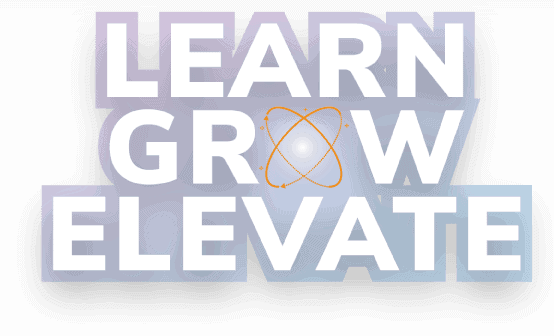
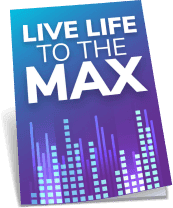






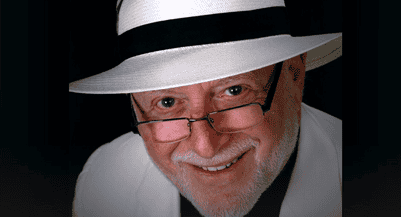
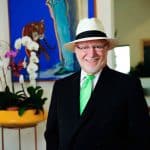 About Michael E. Gerber
About Michael E. Gerber